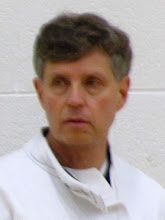One day, my
uncle and I were perched at the top of “Number 9 Express,” at the top of the
Supreme Chair at Alta and looking across at clouds streaming past Mount
Superior. “Skiing is more like flying
than flying is,” he said. “I’ve always
preferred skiing.” Then he disappeared,
sailing smoothly down the steep track between the trees.
I knew
exactly what he meant. Actual flight
isn’t what it is in dreams until you’ve actually done it. And then, of course, it changes. I still have dreams in which I’m managing
difficult landings. But my uncle’s
comments were a surprise, nevertheless.
He flew for much of his life and he loved it.
When I think
about flight and what captures the experience at its deepest and most
beautiful, two books come to mind Antoine de Saint-Exupéry’s Wind Sand and Stars and Charles
Lindbergh’s We. Both are classics, easily found and often
read, at least by those with an interest in aviation. They capture, the novelty, brash-heroism and
beauty of the endeavor when it was new. Saint-Exupéry
remains a particularly powerful example of how the exploration of a new
physical and scientific frontier can also summon the intellectual best of those
who pursued it. Flight, particularly in
a single engine plane, makes Newtonian
physics visceral and philosophical in a way it isn’t ordinarily.
Here’s a
simple example. One day I was flying
with my instructor over Antelope Island, practicing emergency landings. (We weren’t actually landing, just going
through the procedures, choosing a landing site and then flying low over it to
see how good the selection was.) We were
in one of the school’s 3 Piper
Tomahawks, a low-wing trainer with a nice big tail. My instructor mentioned that they’d
originally had 4. The fourth had been
flown in inappropriate conditions as a storm was coming in. The pilot attempted to return to the airport
but the storm’s wind velocity exceeded the maximum airspeed of the
Tomahawk. The little airplane was blown
gently backwards into the side of a hill on the island. The injured pilot survived but a spent the
greater part of a miserable night with the wreckage.
When I think
of the best books about space flight, a forgotten and neglected classic comes
to mind: A House in Space by Henry S. F. Cooper Jr. Cooper’s book is a history of Skylab , a set of
manned missions in the cesura between the Gemini and Apollo programs utilizing
the Gemini capsule technology and a space station improvised from an Atlas
booster second stage. Cooper was one of
the first to look at all aspects of space flight and recognized the importance
of simulation and engineering. His wide
purview enabled him to identify questions and issues which are at the
technological and physical heart of the pursuit of manned flight. It’s surprisingly pertinent today when
robotics is offering a viable alternative for many missions. And Cooper, through the words of the
astronauts, like Saint-Exupéry and Lindbergh before him, gives you a sense of
what it’s really like to fly in space, from the explosive creaks and pops of an
orbiting spacecraft as it sails through a 400 degree temperature change with
every sunrise and sunset every twenty minutes to the relentless astronaut preparation
to make flying and dealing with the most knotty and obscure emergencies natural. It’s a neglected classic worthy of
rediscovery.
I think my
favorite line in “The Right Stuff” belongs to Sam Shepard portraying Chuck
Yeager. “What’s next, Ridley?” (Comet Lovejoy by Dr. Robert Jensen).





No comments:
Post a Comment